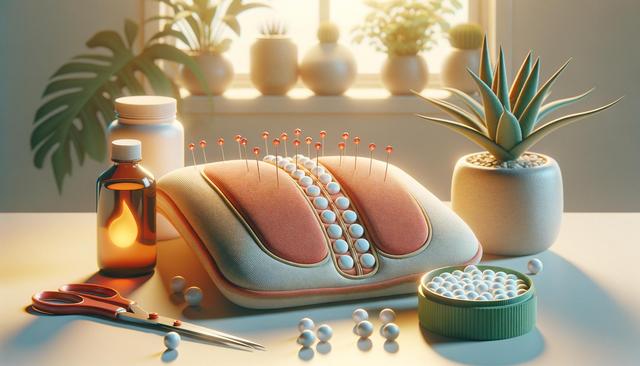What Is Cellulitis and How Does It Differ From Cellulite?
Cellulitis is a bacterial skin infection that typically affects the deeper layers of the skin and underlying tissue. It is often confused with cellulite, which is a cosmetic condition involving dimpled skin usually found on the thighs, buttocks, or abdomen. While cellulitis requires medical treatment, cellulite is not harmful and can be addressed with various cosmetic procedures. Understanding the distinction is crucial for selecting the right approach—whether it’s medical intervention or choosing a strategy featured in programs like Cellulite Removal Unveiled.
Cellulitis usually results from bacteria entering the skin through a crack or cut, leading to redness, swelling, and tenderness. It often affects the lower legs but can occur anywhere on the body. Symptoms include:
- Redness and warmth in the affected area
- Swelling and pain
- Fever and chills in more severe cases
Treatment for cellulitis typically involves antibiotics, rest, and elevation of the affected limb. It’s important to seek medical attention promptly to avoid complications. Unlike cellulite, which is often addressed through aesthetic treatments, cellulitis is a serious bacterial infection that requires appropriate medical care.
Medical Treatment Options for Cellulitis
The primary treatment for cellulitis involves antibiotics, which can be administered orally or intravenously, depending on the severity of the infection. Most mild to moderate cases respond well to oral antibiotics when administered early. However, severe cases may require hospitalization for IV antibiotics and close monitoring.
In addition to antibiotics, supportive care is essential. This includes:
- Keeping the affected area elevated to reduce swelling
- Applying warm compresses to ease discomfort
- Hydration and rest
It’s important to complete the full course of antibiotics even if symptoms improve early. Failing to do so can lead to recurring infections or antibiotic resistance. While this treatment doesn’t relate directly to cosmetic concerns, individuals often misinterpret cellulite for cellulitis. Resources like Cellulite Pictures can help distinguish between the two by providing visual references.
Preventing cellulitis in the future involves proper wound care, managing chronic conditions like diabetes, and maintaining good hygiene. Individuals who have experienced cellulitis before may benefit from preventive antibiotics if their doctor deems it necessary.
Addressing Cosmetic Concerns: Cellulite and Its Treatments
Once cellulitis has been treated and ruled out, many individuals turn their attention to cosmetic concerns such as cellulite. Cellulite is a common condition that results from fat deposits pushing through connective tissue beneath the skin. While not medically harmful, it can cause self-consciousness and a desire for aesthetic improvement.
There are multiple approaches to reducing the appearance of cellulite, including:
- Topical creams and lotions that improve skin texture
- Massage therapies that enhance circulation
- Minimally invasive procedures like laser treatments
Cellulite Reduction Therapy aims to smooth and tighten the skin, often using a combination of techniques for improved results. For those looking for affordability, searching phrases like Cheap Cellulite Treatment Near Me can help locate budget-friendly options. Additionally, many clinics offer consultations to evaluate the most appropriate Cellulite Reduction Treatments for your unique skin type and concerns.
Although results vary by individual, consistent treatment can lead to noticeable improvements. Choosing a reputable provider ensures better outcomes, especially when dealing with sensitive skin following cellulitis recovery.
Using Supplements and Lifestyle Changes to Support Skin Health
In addition to professional treatments, lifestyle choices and supplements can play a role in managing cellulite. Collagen, a protein that supports skin elasticity, is often recommended as part of an overall strategy. Among the most discussed options is the Best Collagen for Cellulite, which refers to high-quality collagen supplements designed to enhance skin firmness.
To support skin health and reduce the appearance of cellulite, consider these practices:
- Staying well-hydrated to maintain skin elasticity
- Eating a balanced diet rich in antioxidants and healthy fats
- Engaging in regular physical activity to tone muscles and reduce fat
Supplements can be a helpful addition, but they should not replace a healthy lifestyle. Choosing well-regarded collagen products, often labeled among the top-rated options, may contribute positively to your skin’s appearance over time. Coupling this with non-invasive Cellulite Reduction Therapy can yield more comprehensive results for those looking to enhance skin texture post-cellulitis treatment.
Before starting any supplement, consult with a healthcare provider—especially if you’ve recently dealt with infections like cellulitis. This ensures your approach is both safe and effective.
Finding the Right Cellulite Treatment Near You
With a wide range of cellulite treatments available today, it can be overwhelming to decide where to begin. A practical first step is to search for Cellulite Treatment Near Me or Cheap Cellulite Treatment Near Me to find local providers. Many clinics specialize in non-invasive procedures that require minimal downtime and offer gradual improvement with consistent application.
When evaluating treatment options, consider the following:
- Reputation and credentials of the clinic
- Types of treatments offered (e.g., laser, massage, radiofrequency)
- Cost and package deals for multiple sessions
- Customer reviews and before-and-after photos (like those found under Cellulite Pictures)
Booking a consultation allows you to receive a personalized plan tailored to your skin type and aesthetic goals. Clinics often combine several Cellulite Reduction Treatments for optimal results, using methods that are backed by science and patient satisfaction.
Ultimately, the key to success is consistency. Whether you’re interested in advanced therapies or holistic supplements such as the Best Collagen for Cellulite, your commitment to a well-rounded approach will influence the outcome.
Conclusion: Taking the Right Steps for Health and Confidence
Understanding the difference between cellulitis and cellulite is essential for addressing each condition effectively. While cellulitis requires urgent medical treatment, cellulite is a common cosmetic issue that can be managed with the right combination of therapies, lifestyle changes, and informed choices. By exploring options such as Cellulite Reduction Therapy and quality supplements like the Best Collagen for Cellulite, individuals can take practical steps toward smoother, healthier-looking skin.
Whether you’re searching for Cellulite Treatment Near Me or researching through platforms like Cellulite Removal Unveiled, remember that long-lasting results come from a consistent and informed approach. Always prioritize your health first, especially after recovering from conditions like cellulitis, and consult with professionals to guide your aesthetic journey.




Leave a Reply